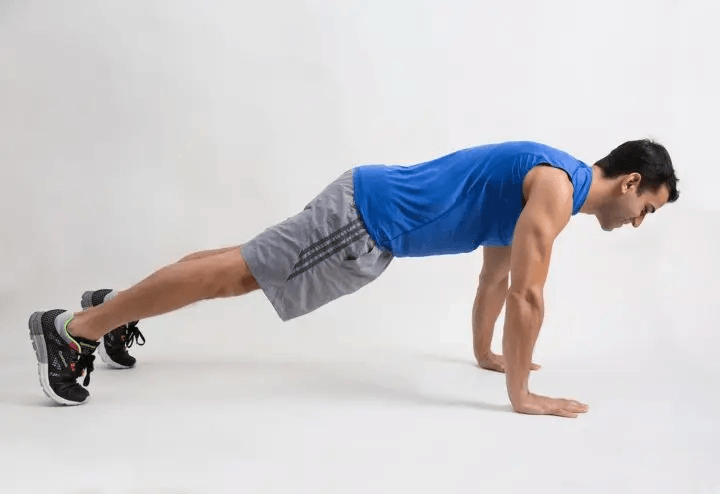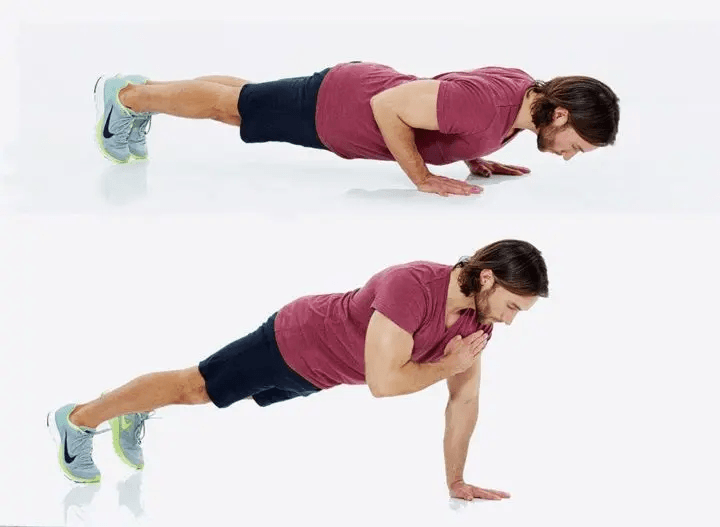
10 Types of Push Ups for Beginners
The push ups for beginners are one of the simplest and functional exercises. Also, it is almost for every muscle we have – the triceps and chest get a great workout, but the movement also involves shoulders, core, lats, lower back, legs, and glutes.
If you are new to physical training, you may find it really difficult to do a good amount of push-ups with good technique. In that case, it’s best to try some alternatives that allow you to do a greater number of push-ups without compromising your technique.
See also: How to do Push Ups for Beginners
Discover the 10 types of push-ups exercise that anyone, regardless of their physical condition, can practice.
10 Types of Push ups for Beginners
It shouldn’t be embarrassing to start from scratch, as these exercises will help build the foundation of strength needed for the more advanced variations. Plus, anyone who has done some good push-ups the traditional way knows that this is an explosive full-body workout all by itself.
Always remember not to perform any exercise unless you can handle the full range of motion. If doing a pushup on the floor is too difficult, return to the exercise by leaning on your knees or the wall.
1. Push-up on the wall for beginners
This is the first step on the road to mastering push-ups. It is basically a push-up while standing against a wall, which reduces the amount of weight that the muscles have to support.

2. Push-Ups on the table
The trick to getting stronger for a standard push-up is to start from the wall and gradually get more and more horizontal. Flex on a table or chair on your way down and it won’t take long for you to be able to do push-ups on the floor.

3. Push up Bend of the knees
This is identical to a push-up, but performed on your hands and knees, with your feet off the ground as you descend. This makes the abs and legs do a great job, being a great way to practice for actual movement.

4. Standard Flex
These are the actual push-ups, one of the most fundamental bodyweight exercises on the floor. Performing push-ups frequently will help strengthen your entire upper body.

5. Push-ups with a hand touch
Pause at the top of the push-up and use one hand to tap or hit the other. Change hands with each rep. That short break helps improve balance and makes the exercise more isometric, which is a great way to build strength.

6. Push-ups with touch on the shoulder
These types of push-ups are great because they have a slightly wider grip, being better to optimize balance.

7. Push-ups with rotation
These push-ups include rotating the body through a side plank when the push-up is completed, keeping the upper arm straight in the air, and causing the body to resemble a “T”. This works the shoulders and obliques, while also helping to improve balance.

See also: Bruce Lee Two Finger Push Up
8. Push-ups with touch on the thigh
A touch on the outer thigh at the top of the push-ups helps to strengthen the stabilizer muscles, while also giving the triceps a greater stimulus.

9. Single-arm raised Push-ups
In this type of push-up, isometric strength is very important to stabilize the muscles by bringing the arm to the front to its full extent. This variation makes balance much more difficult, but the core gets a good job.

10. Push-ups with a raised leg
Do a push-up, but lift one leg off the ground and bring it to parallel to the floor. This creates more instability and demands more effort on your abs to achieve balance.

Conclusion
There might be no end to the different shapes and names we can give to this classic exercise, but we’ve done our best to bring you the best-known
There is no international authority for push-ups, official certification council, or anyone charged with naming the different types of push-ups. So what we might call a rotational flex, others would call it a T-shaped flex, and so on. We have endeavored to be exact, but we admit that some people may have different names for these movements that we make. push-ups for beginners. Just be sure to spend some time perfecting your form and fixing the basics, before jumping into the variations that require balance, coordination, and increased strength.
References
- 82 Push-Ups You Need to Know About. For Greatist [Revised April 2016].



